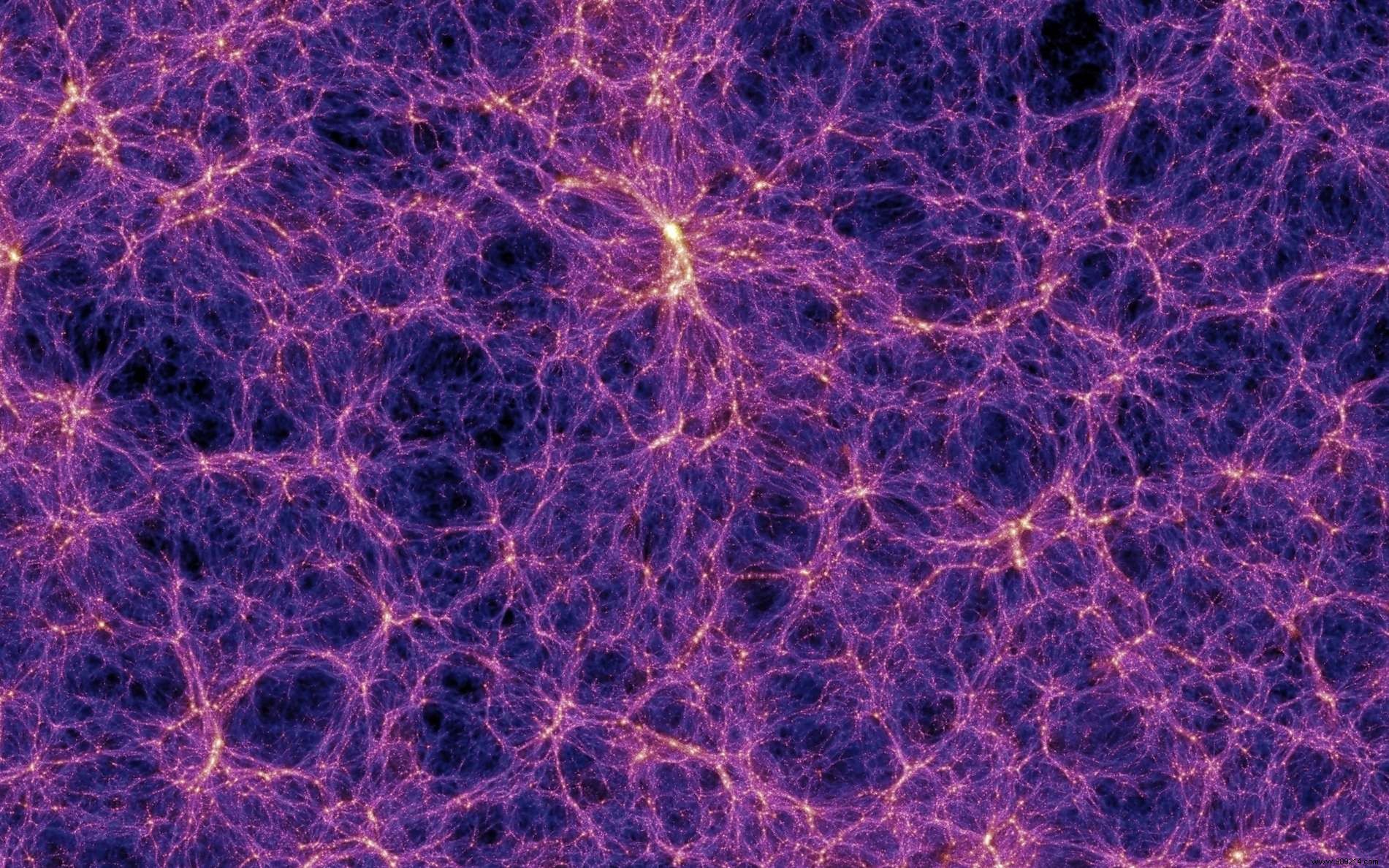Planets, stars, galaxies and other clusters of galaxies… All these objects evolve in rotation in the Universe. A recent study suggests that angular momentum is also at work at much larger scales.
It's hard to imagine the structure of the Universe from our point of view, but if you took a long, long step back, you would notice that the distribution of matter in the cosmos is not done in a uniform way.
Its structure is indeed akin to a gigantic cosmic web made up of incredibly long strands inside which the galaxies move. In this table, the clusters and superclusters of galaxies are then positioned at the crossings of gigantic filaments, which concentrate more than half of all the baryonic matter (directly observable) in our Universe.
As part of a study, a team of researchers points to evidence suggesting that these stringy structures, which span hundreds of millions of light-years, rotate on themselves. If the discovery is confirmed, these filaments would thus represent the largest rotating structures ever seen in the Universe .

As part of this work, astronomers from the Leibniz Institute for Astrophysics in Potsdam (AIP), Germany, mapped the motion of galaxies contained within the inside these immense cosmic highways. To do this, they relied on data from the Sloan Digital Sky, a celestial object survey program operated from the Apache Observatory in New Mexico (United States), to analyze their light.
As light waves pass through spacetime, the expansion of the Universe extends them toward the red end of the electromagnetic spectrum. Conversely, the wavelengths of light from an approaching object will appear to shorten slightly towards the blue end of the spectrum. This is called the Doppler effect.
By carefully studying the light from galaxies contained in some of these cosmic filaments, and comparing them to each other, astronomers have discovered that the light from galaxies positioned at a side of their filament was red-shifted relative to that of the galaxies moving on the other side.
For authors, who publish their work in Nature Astronomy , all of these galaxies would therefore move along "corkscrew" shaped orbits, revolving around the center of the filament while traveling along it.

Such rotation has never been seen before at such gigantic scales, and understanding what that mechanism is could help astronomers understand how angular momentum was generated in the cosmos in the first place . For now, it's a mystery.